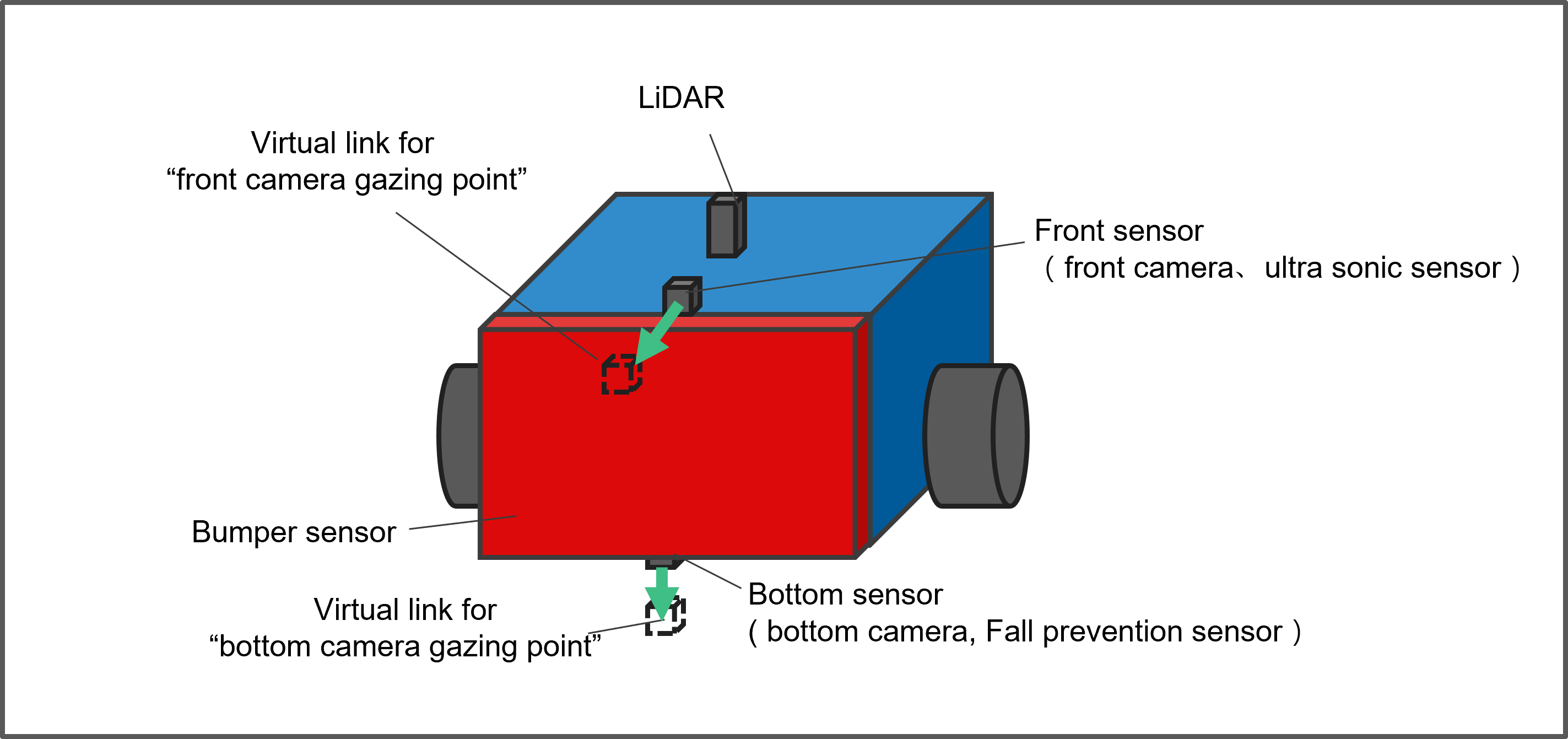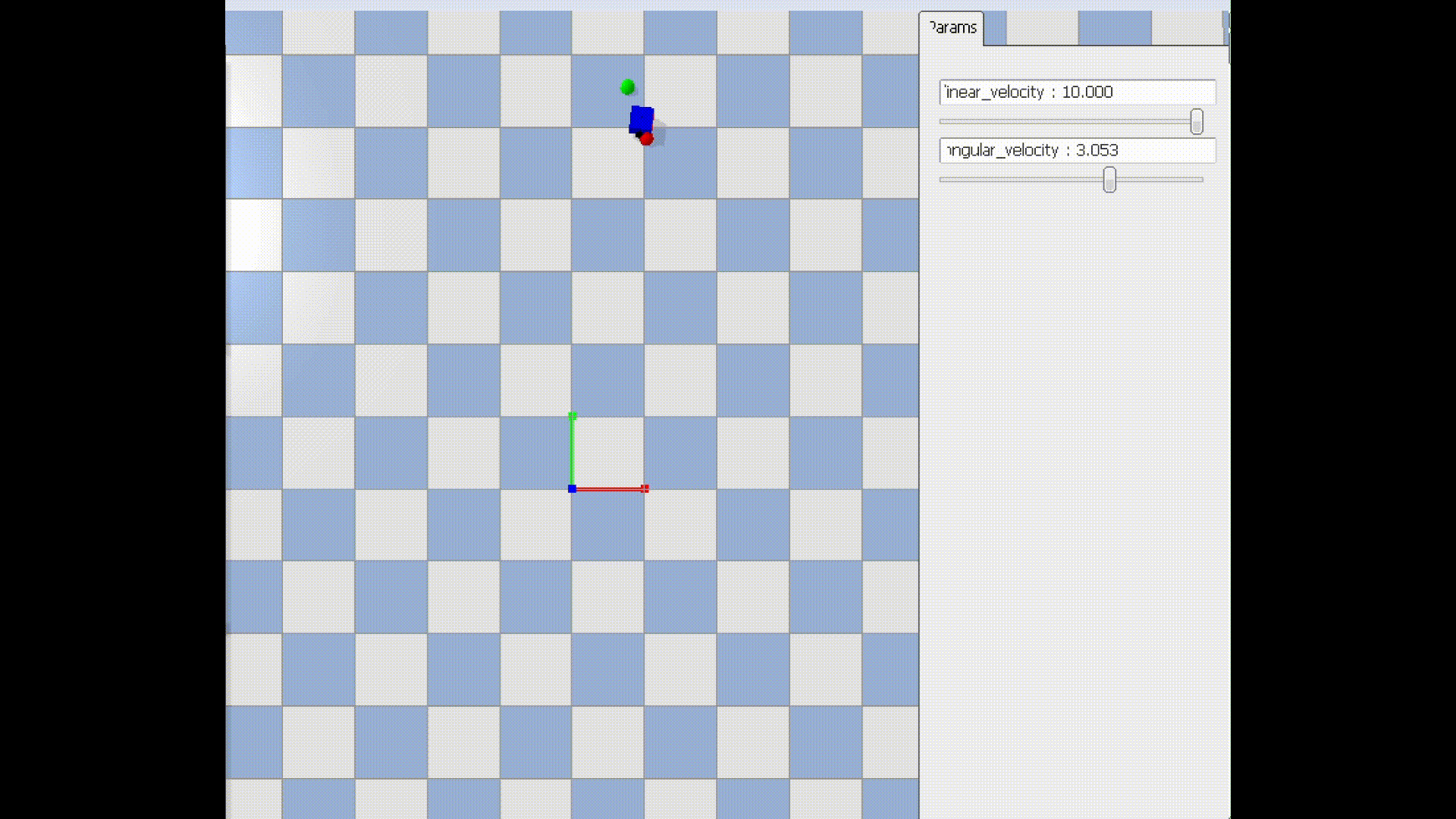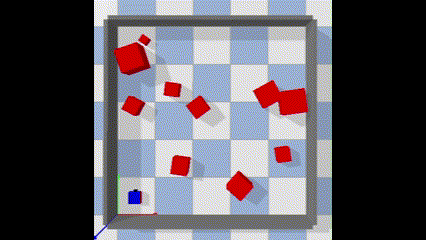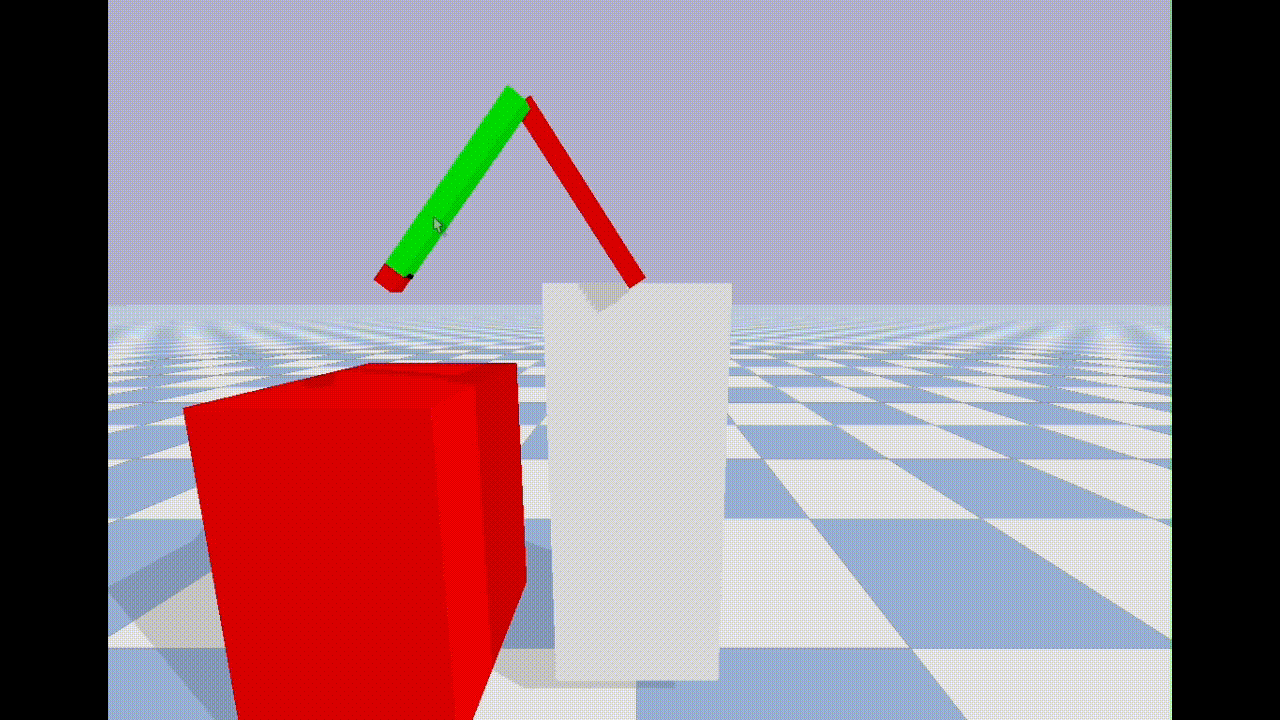This repository contains “code for learning robotics algorithms” that can be executed with pybullet.
(The English documentation and comments on code in this repository are translated by ChatGPT.)
Features:
- Code to help you understand the algorithms of robotics.
- A physics simulation that can be run in the Python environment only.
- Can be run in the Python environment only, making it easy to build an environment and concentrate on learning the algorithm.
Notes:
Since the code is for understanding algorithms, it may not be suitable for practical use, such as “optimizing processing speed” or “excessive comments on the code”.
- PybulletRobotics
- table of contents
- Installation
- General
- Mobile Robot
- Basics
- Line Trace
- Position Estimation using Wheel Odometry
- Position Estimation Using Particle Filter
- Position Estimation using Extended Kalman Filter(EKF)
- Global Path Planning using A*
- Local Path Planning using Dynamic Window Approach (DWA)
- Line Tracing using Q-Learning (Reinforcement Learning)
- Other Planned Content
- Robot Arm
- reference
The following steps outline how to install the necessary libraries for running robotics simulations with pybullet.
The versions of each library used during the verification process are noted as comments next to each command.
Verified environment: Ubuntu (WSL is also acceptable)
sudo apt updatesudo apt install python3-pippip3 install pybullet # version 3.2.6pip3 install numpy # version 1.24.3pip3 install matplotlib # version 3.5.1pip3 install opencv-contrib-python # version 4.5.4pip install scipy # version 1.11.3pip install ffmpeg-python # version 0.2.0sudo apt install ffmpegHere, we introduce the basic usage of pybullet in robotics.
- Creating an environment
- Loading a robot from a URDF file
- Running a simulation
For details, refer to "pybullet_basic.ipynb".
This section introduces how to detect the position and orientation of AR markers from images captured by a camera.
For details, refer to "ar_marker_detect.ipynb".
We introduce simple code to move a two-wheeled mobile robot.
For details, refer to "mobile_robot_basic.ipynb".
We introduce how to use the following sensors in a two-wheeled mobile robot.
- Ultrasonic sensor
- Camera
- LiDAR
- Fall prevention sensor
- Bumper
For details, refer to "mobile_robot_sensor.ipynb".
We introduce how to perform line tracing using the bottom camera of a two-wheeled mobile robot.
For details, refer to "mobile_robot_line_trace.ipynb".
We introduce how to perform position estimation using wheel odometry in a two-wheeled mobile robot.
For details, refer to "mobile_robot_wheel_odometry.ipynb".
This section introduces how to perform position estimation using a particle filter for a two-wheeled mobile robot.
For more details, refer to "mobile_robot_particle_filter.ipynb".
We introduce a method for position estimation using an Extended Kalman Filter in a two-wheeled mobile robot.
(The red dot indicates the estimated position using only the motion model, and the green dot indicates the estimated position using the EKF.)
For more details, refer to "mobile_robot_extended_kalman_filter.ipynb".
We introduce how to perform global path planning using A* for a two-wheeled mobile robot.
For details, refer to "mobile_robot_global_path_planning_a_star.ipynb".
We introduce how to perform local path planning using the Dynamic Window Approach (DWA) for a two-wheeled mobile robot.
For details, refer to "mobile_robot_local_path_planning_dwa.ipynb".
We introduce how to perform line tracing using Q-Learning (Reinforcement Learning) for a two-wheeled mobile robot.
For details, refer to "mobile_robot_q_learning_line_trace.ipynb".
- SLAM
- Line Tracing with Supervised Learning
We introduce simple code to control a two-axis robot arm (position control, velocity control, torque control).
position control
velocity control
torque control
For details, refer to "robot_arm_basic.ipynb".
We introduce how to use the following sensors in a two-axis robot arm.
- End-effector camera
- End-effector force sensor
End-effector camera
End-effector force sensor
For details, refer to "robot_arm_sensor.ipynb".
We introduce how to perform collision detection between a robot arm and objects.
For details, refer to "robot_arm_collision_check.ipynb".
We introduce forward kinematics of a robot arm using trigonometric functions.
For details, refer to "robot_arm_trigonometric_forward_kinematics.ipynb".
We introduce forward kinematics of a robot arm using homogeneous transformation matrix.
For details, refer to "robot_arm_homogeneous_matrix_forward_kinematics.ipynb".
Introducing inverse kinematics for robot arms using analytical methods.
For more details, refer to "robot_arm_analytical_inverse_kinematics.ipynb".
Introducing inverse kinematics for robot arms using numerical methods.
For more details, refer to "robot_arm_jacobian_inverse_kinematics.ipynb".
We introduce how to perform object position estimation using eye-to-hand.
For details, refer to "robot_arm_eye_to_hand.ipynb".
We introduce how to perform object position estimation using eye-in-hand.
For details, refer to "robot_arm_eye_in_hand.ipynb".
We introduce how to perform image-based visual servoing.
For details, refer to "robot_arm_image_based_visual_servo.ipynb".
- PID Control
- Motion Planning using Configuration Space
- Force Control
- Hybrid Position and Force Control
- Compliance Control
- pybullet_quickstart_guide:This is a quick start guide summarizing the functions available in pybullet (official).
- PythonRobotics:This repository compiles robotics algorithms implemented in Python. It includes various algorithms, making it an excellent resource for studying robotics.
- pybulletの公式サンプル129個を全部解説する - Qiita:This article explains (or plans to explain) 129 official pybullet samples.
- 【図解】ロボティクスの辞書【python】:This is a summary article of articles explaining technologies related to robotics.





























